
Models
KM-350MAJ, MWJ
KM-520MAJ, MWJ, MRJ
KM-660MAJ, MWJ, MRJ
Modular Crescent Cuber
Service Manual
Number: 73230
Issued: 10-29-2018
Revised: 2-27-2020
hoshizakiamerica.com

2
WARNING
Only qualied service technicians should install and service the appliance. To
obtain the name and phone number of your local Hoshizaki Certied Service
Representative, visit www.hoshizaki.com. No service should be undertaken until
the technician has thoroughly read this Service Manual. Failure to service and
maintain the appliance in accordance with this manual will adversely affect safety,
performance, component life, and warranty coverage. Proper installation is the
responsibility of the installer. Product failure or property damage due to improper
installation is not covered under warranty.
Hoshizaki provides this manual primarily to assist qualied service technicians in the
service of the appliance.
Should the reader have any questions or concerns which have not been satisfactorily
addressed, please call, send an e-mail message, or write to the Hoshizaki Technical
Support Department for assistance.
Phone: 1-800-233-1940; (770) 487-2331
Fax: 1-800-843-1056; (770) 487-3360
E-mail: techsuppor[email protected]
618 Highway 74 South
Peachtree City, GA 30269
Attn: Hoshizaki Technical Support Department
Web Site: www.hoshizaki.com
NOTE: To expedite assistance, all correspondence/communication MUST include the
following information:
• Model Number
• Serial Number
• Complete and detailed explanation of the problem.

3
CONTENTS
Important Safety Information ................................................................................................. 5
I. Construction and Water/Refrigeration Circuit Diagram ....................................................... 7
A. Construction .................................................................................................................. 7
1. Air-Cooled Models (MAJ) ......................................................................................... 7
2. Water-Cooled Models (MWJ) ................................................................................... 8
3. Remote Models (MRJ) ............................................................................................. 9
B. Water/Refrigeration Circuit Diagram ............................................................................ 10
1. Air-Cooled Models (MAJ) ....................................................................................... 10
2. Water-Cooled Models (MWJ) ..................................................................................11
3. Remote Models (MRJ) ........................................................................................... 12
II. Sequence of Operation and Service Diagnosis ............................................................... 13
A. Sequence of Operation Flow Chart ............................................................................. 13
1. Operation Flow Chart ............................................................................................ 13
2. Shutdown Flow Chart ............................................................................................ 14
B. Service Diagnosis ....................................................................................................... 15
C. Control Board Check ................................................................................................... 21
D. Bin Control Check and Adjustment .............................................................................. 22
E. Float Switch Check and Cleaning ............................................................................... 26
F. Thermistor Check ......................................................................................................... 28
G. Control Switch ............................................................................................................. 28
H. Mode Switch ............................................................................................................... 28
I. Diagnostic Tables .......................................................................................................... 29
J. Freeze-Up Check List .................................................................................................. 33
III. Controls and Adjustments ............................................................................................... 34
A. Control Board Layout .................................................................................................. 35
B. LED Lights and Audible Alarm Safeties ....................................................................... 36
C. Settings and Adjustments ............................................................................................ 37
1. Default Dip Switch Settings .................................................................................... 37
2. Harvest Time (S4 dip switch 1 & 2)........................................................................ 38
3. Pump-Out Time/Harvest Time During Pump-Out (S4 dip switch 3 & 4) ................. 38
4. Pump-Out Frequency Control (S4 dip switch 5) ..................................................... 39
5. Harvest Pump Time (Harvest Assist) (S4 dip switch 6) ......................................... 39
6. Harvest Pump Time (Harvest Assist (S4 dip switch 7) .......................................... 40
7. Factory Use (S4 dip switch 8)................................................................................. 40
8. Freeze Timer (S4 dip switch 9 & 10) ...................................................................... 40
9. Pump-Out Pump Motor Direction (S5 dip switch 1) ............................................... 41
10. Rell Counter (S5 dip switch 2 and 3) .................................................................. 41
11. Minimum Harvest Time (S5 dip switch 4) ............................................................. 41
12. Anti-Slush (S5 dip switch 5) ................................................................................. 42
IMPORTANT
This manual should be read carefully before the appliance is serviced. Read
the warnings and guidelines contained in this manual carefully as they provide
essential information for the continued safe use, service, and maintenance of the
appliance. Retain this manual for any further reference that may be necessary.

4
IV. Refrigeration Circuit and Component Service Information.............................................. 43
A. Refrigeration Circuit Service Information .................................................................... 43
B. Component Service Information .................................................................................. 46
C. Water Regulating Valve Adjustment (water-cooled model) .......................................... 47
V. Maintenance .................................................................................................................... 48
VI. Preparing the Appliance for Periods of Non-Use ............................................................ 49
VII. Disposal ......................................................................................................................... 51
VIII. Technical Information .................................................................................................... 52
A. Specication and Performance Data Sheets ............................................................... 52
1. KM-350MAJ ........................................................................................................... 52
2. KM-350MWJ .......................................................................................................... 53
3. KM-520MAJ ........................................................................................................... 54
4. KM-520MWJ .......................................................................................................... 55
5. KM-520MRJ with URC-5F ..................................................................................... 56
6. KM-660MAJ ........................................................................................................... 57
7. KM-660MWJ .......................................................................................................... 58
8. KM-660MRJ with URC-5F ..................................................................................... 59
B. Wiring Diagram ........................................................................................................... 60

5
Important Safety Information
Throughout this manual, notices appear to bring your attention to situations which could
result in death, serious injury, damage to the appliance, or damage to property.
WARNING Indicates a hazardous situation which could result in death or
serious injury.
NOTICE Indicates a situation which could result in damage to the
appliance or property.
IMPORTANT Indicates important information about the use and care of the
appliance.
WARNING
The appliance should be destined only to the use for which it has been expressly
conceived. Any other use should be considered improper and therefore dangerous.
The manufacturer cannot be held responsible for injury or damage resulting from
improper, incorrect, and unreasonable use. Failure to service and maintain the
appliance in accordance with this manual will adversely affect safety, performance,
component life, and warranty coverage and may result in costly water damage.
To reduce the risk of death, electric shock, serious injury, or re, follow basic
precautions including the following:
• Only qualied service technicians should install and service this appliance.
• The appliance must be installed in accordance with applicable national, state, and
local codes and regulations.
• Electrical connection must be hard-wired and must meet national, state, and local
electrical code requirements. Failure to meet these code requirements could result
in death, electric shock, serious injury, re, or severe damage to equipment.
• The icemaker requires an independent power supply of proper capacity. See the
nameplate for electrical specications. Failure to use an independent power supply
of proper capacity can result in a tripped breaker, blown fuses, damage to existing
wiring, or component failure. This could lead to heat generation or re.
• THE ICEMAKER MUST BE GROUNDED. Failure to properly ground the icemaker
could result in death or serious injury.
• Move the control switch to the "OFF" position and turn off the power supply before
servicing. Lockout/Tagout to prevent the power supply from being turned back on
inadvertently.
• To reduce the risk of electric shock, do not touch the control switch with damp
hands.
• Do not make any alterations to the unit. Alterations could result in electric shock,
injury, re, or damage to the unit.
• The appliance is not intended for use by persons (including children) with reduced
physical, sensory, or mental capabilities, or lack of experience and knowledge,
unless they have been given supervision or instruction concerning use of the
appliance by a person responsible for their safety.

6
WARNING, continued
• Children should be properly supervised around this appliance.
• Do not climb, stand, or hang on the appliance or allow children or animals to do so.
Serious injury could occur or the appliance could be damaged.
• Do not use combustible spray or place volatile or ammable substances near the
appliance. They might catch re.
• Keep the area around the appliance clean. Dirt, dust, or insects in the appliance
could cause harm to individuals or damage to the appliance.
Additional Warning for Remote Models
• THE REMOTE CONDENSER UNIT MUST BE GROUNDED. The power supply and
ground connection to the remote condenser unit are supplied from the icemaker.
Failure to properly ground the remote condenser unit could result in death or
serious injury.
• Move the icemaker control switch to the "OFF" position and turn off the power
supply to the icemaker before servicing the remote condenser unit.
Lockout/Tagout to prevent the power supply from being turned back on
inadvertently.
NOTICE
• Follow the instructions in this manual carefully to reduce the risk of costly water
damage.
• In areas where water damage is a concern, install in a contained area with a oor
drain.
• Install the appliance in a location that stays above freezing. Normal operating
ambient temperature must be within 45°F to 100°F (7°C to 38°C).
• Do not leave the icemaker on during extended periods of non-use, extended
absences, or in sub-freezing temperatures. To properly prepare the icemaker for
these occasions, follow the instructions in "VI. Preparing the Appliance for Periods
of Non-Use."
• Do not place objects on top of the appliance.
• The dispenser unit/ice storage bin is for ice use only. Do not store anything else in
the dispenser unit/ice storage bin.

7
I. Construction and Water/Refrigeration Circuit Diagram
A. Construction
1. Air-Cooled Models (MAJ)
Model Shown: KM-350MAJ
Water Supply Inlet
Condenser
Drier
Control Box
Spray Tubes
Control Switch
Water Pump
Float Switch
Compressor
Thermostatic
Expansion Valve
Fan Motor
Hot Gas Valve
Cleaning Valve
Bin
Control
Sensor
Inlet Water Valve
High-Pressure
Switch
Liquid Line
Valve
Evaporator
Stainer
Mode Switch
Drain Valve

8
2. Water-Cooled Models (MWJ)
Water Supply Inlet
Condenser
Drier
Control Box
Spray Tubes
Control Switch
Water Pump
Float Switch
Compressor
Thermostatic
Expansion
Valve
Water Regulating
Valve
Hot Gas Valve
Cleaning Valve
Model Shown: KM-520MWJ
Inlet Water
Valve
Liquid Line Valve
High-Pressure Switch
Bin Control Sensor
Evaporator
Stainer
Mode Switch
Drain Valve

9
3. Remote Models (MRJ)
Receiver Tank
Water Supply Inlet
Drier
Spray Tubes
Control Switch
Water Pump
Float Switch
Compressor
Thermostatic
Expansion Valve
Hot Gas Valve
Liquid Line Valve
Cleaning Valve
Model Shown: KM-660MRJ
Inlet Water
Valve
Crankcase Heater
Stainer
High-Pressure
Switch
Evaporator
Bin Control
Sensor
Control Box
Mode Switch
Drain Valve

10
B. Water/Refrigeration Circuit Diagram
1. Air-Cooled Models (MAJ)
Water Supply
Float Switch
Drain
Thermostatic Expansion Valve
Compressor
Hot Gas
Valve
High-Pressure
Switch
Strainer
Fan
Drier
Condenser
Evaporator
Discharge Line
Suction Line
Water Pump
Thermistor
Spray Tubes
Inlet Water Valve
Water Tank
Refrigeration Circuit
Water Circuit
Heat
Exchanger
Liquid Line Valve
Cleaning Valve
Drain Valve

11
2. Water-Cooled Models (MWJ)
Water Supply
Float Switch
Drain
Thermostatic Expansion Valve
Compressor
Hot Gas
Valve
High-Pressure
Switch
Strainer
Drier
Condenser
Evaporator
Discharge Line
Suction Line
Water Pump
Thermistor
Spray Tubes
Inlet Water Valve
Water Tank
Refrigeration Circuit
Water Circuit
Heat
Exchanger
Liquid Line Valve
Water Regulating Valve
Cleaning Valve
Drain Valve

12
3. Remote Models (MRJ)
Water Supply
Float Switch
Drain
Compressor
Hot Gas
Valve
High-Pressure
Switch
Strainer
Fan
Drier
Remote Condenser
Evaporator
Discharge Line
Suction Line
Water Pump
Thermistor
Spray Tubes
Inlet Water Valve
Water Tank
Refrigeration Circuit
Water Circuit
Liquid Line
Valve
Receiver
Headmaster
(C.P.R.)
Thermostatic Expansion
Valve
Heat
Exchanger
Cleaning Valve
Drain Valve

13
II. Sequence of Operation and Service Diagnosis
A. Sequence of Operation Flow Chart
1. Operation Flow Chart
FS check
1 to 3-min. harvest timer in
control (S4 dip switch 1 & 2)
Legend:
BC–bin control
Comp–compressor
DV–drain valve
FM–fan motor
FMR–fan motor-remote
FS–oat switch
HGV–hot gas valve
LLV –liquid line valve
PM–pump motor
WV–inlet water valve
Components Energized when the Control Switch is in the "PUMP" Position
When the control switch is in the "PUMP" position power is supplied to the pump motor. Water tank contents then ows over the outside of the
evaporator plate assembly. Note: Water tank contents does not ow in-between the evaporator plates.
Operation Flow Chart
1. 1-Minute
Fill Cycle
Cycle
Steps
2. Harvest Cycle
• WV time: 6 min. or the length of harvest minus 50 sec.
(S4 dip switch 7), whichever is shorter. Do not adjust S4
dip switch 7 out of the factory position.
• Max. harvest time: 20 min.
Thermistor
in control
3. Freeze Cycle
• Min. freeze time: 5 min.
• Max. freeze time: freeze timer setting (S4 dip
switch 9 & 10).
FS in control
4. Pump-Out Cycle
• Factory set for every 10th
cycle
(S4 dip switch 5)
• Pump motor stops for
2 sec., then energizes
for 10/20 sec.
(S4 dip switch 3 & 4)
WV energized
FS open
Comp energized
FMR energized
HGV energized
WV energized
Thermistor temperature reaches
48°F (9°C) (3.9 kΩ or less).
Harvest timer starts.
FS open
Comp energized
FM energized
FMR energized
PM energized
LLV energized
HGV de-energized
FS closed
Comp energized
DV energized
FMR energized
HGV energized
PM de-energizes for 2 sec.,
then energizes for 10/20 sec.
FM de-energized
LLV de-energized
FS check
Startup
If FS is open, Comp stops and cycle returns to
1-Min. ll.
5-min.
minimum
freeze timer in
control
FS closed
FS opens or freeze
timer terminates
50 sec.
PM energized
WV de-energized
Harvest Pump
Timer
Anti-Slush
Thermistor temperature
reaches 36°F (2.2°C)
(5.8 kΩ).
PM de-energized for
10 sec.
Components Energized when the Control Switch is in the "ON" or "PUMP" position and the Mode Switch
is in the "CLEAN" Position
• When the control switch is in the "ON" position and the mode switch is in the "CLEAN" position power is supplied to the control board K9 connector. The control board
then initiates a clean/sanitize program. See the maintenance label on the top cover or the instruction manual for details.
• When the control switch is in the "PUMP" position and the mode switch is in the "CLEAN" position, only the pump motor energizes and circulates water tank contents
over outside of evaporator plate assembly as the control board power supply has been disconnected. The Clean/Sanitize program cannot initiate in this scenario.

14
2. Shutdown Flow Chart
Shutdown Flow Chart
1. Bin Full
Shutdown Delay:
• Fill Cycle–15 sec. after activation.
• Harvest Cycle–At the end of the harvest cycle, or up
to 15 sec. into the freeze cycle if
activated at the end of the harvest cycle.
• Freeze Cycle– 15 sec. after activation if activated at least
15 sec. before the 5-min. short cycle
protection timer terminates.
Otherwise, at the end of the next harvest
cycle.
Shutdown
and Restart
BC Operation
BC open (BC sensor engaged)
CB Yellow "BC OPEN/CLOSED" LED on
BC Controller Green "LED1" LED off
BC open (BC sensor engaged)
CB Yellow"BC OPEN/CLOSED"
LED continues
BC Controller Green "LED1" LED off
All components de-energized.
2. Icemaker Off
All components
de-energized.
3. Ice Level Lowered
Icemaker starts at
"1. 1-Minute Fill Cycle."
BC closed (BC sensor disengaged)
BC Controller Green "LED1" LED on
CB Yellow "BC OPEN/CLOSED" LED off
To 1. 1-Minute Fill Cycle
Legend:
BC–bin control
CB–control board

15
B. Service Diagnosis
WARNING
• The appliance should be diagnosed and repaired only by qualied service
personnel to reduce the risk of death, electric shock, serious injury, or re.
• Risk of electric shock. Control switch in "OFF" position does not de-energize all
loads Use extreme caution and exercise safe electrical practices.
• Moving parts (e.g., fan blade) can crush and cut. Keep hands clear.
• Before servicing the appliance, move the control switch to the "OFF" position and
turn off the power supply.
• CHOKING HAZARD: Ensure all components, fasteners, and thumbscrews are
securely in place after the appliance is serviced. Make sure that none have fallen
into the dispenser unit/ice storage bin.
• Make sure all food zones in the appliance and dispenser unit/ice storage bin are
clean after service.
The diagnostic procedure is a sequence check that allows you to diagnose the electrical
system and components. Before proceeding, check for correct installation, proper voltage
per nameplate, and adequate water supply. Check CB using the steps in "II.C. Control
Board Check." Check dip switch settings to assure that S4 dip switches and S5 dip
switches 1 through 5 are in the factory default position. S4 dip switch 1, 2, 3, 4, and 5 are
cleaning adjustments and the settings are exible. For factory default settings, see "III.C.1.
Default Dip Switch Settings."
Note: • When checking high voltage (115VAC), always choose a white (W) neutral wire to
establish a good neutral connection.
• When checking voltage from the CB K1 connector (10 pin connector), pull
CBK1connector out slightly to allow room for multimeter test leads contact.
1) Turn off the power supply, then access the control box. Move the control switch to the
"OFF" position. Clear ice from BC sensing area.
2) Check that the 115VAC 10A fuse is good.

16
1. Sequence and Component Diagnosis
3) Power On: Turn on the power supply, then move the control switch to the "ON"
position and the mode switch to the "ICE" position. A 5-sec. delay occurs. CB red
"POWER OK" LED turns on. If CB yellow "BC OPEN" LED is on (indicating a full
bin), move ice away from BC sensing area.
Note: • CB red "POWER OK" LED remains on unless the 10.5VAC power supply is
interrupted (K2 connector).
• Check CB using the steps in "II.C. Control Board Check" or BC using steps in "II.D.
Bin Control Check and Adjustment."
a) Power On Diagnosis: If CB red "POWER OK" LED is off, conrm 10A fuse is good.
Check for 115VAC at control switch #2 (BK) to neutral (W) then at control switch #1(P)
to neutral (W). If 115VAC is present on #2 (BK) and not on #1(P), replace control
switch. If 115VAC is present on control switch #1 (P), check for 115VAC at HPS (P)
to neutral (W) then HPS (BK) to neutral (W). If115VAC is present at HPS (P) and not
at HPS (BK), HPS is open. See HPS Diagnosis below. If 115VAC is present at HPS
(BK), check for 10.5VAC at CB K2#1 red wire to CB K2 #2 red wire. If 10.5VAC is not
present, check that the cleaning valve is closed and the interlock switch is closed.
Next, check CT continuity. If open, replace CT.
b) HPS Diagnosis: Check that the condenser coil is not clogged or restricted. Let
refrigeration circuit pressures equalize. If HPS does not reset and pressures are
equalized, replace HPS. If pressures are not equalized, reclaim refrigerant and
diagnose refrigeration circuit restriction. Check that there are no restrictions in the
refrigeration circuit.
Harvest Cycle: HGV, strainer, or check valve.
Freeze Cycle: FM, FMR, TXV, WRV, HM, LLV, strainer, check valve, drier, and
damaged line set or tting.
Conrm that the location meets installation requirements:
• The appliance is not intended for outdoor use. Normal operating ambient temperature
should be within 45°F to 100°F (7°C to 38°C).
• Allow 6" (15 cm) clearance at rear, sides, and top for proper air circulation and ease of
maintenance and/or service should they be required.
• The appliance should not be located in a corrosive environment.
4) 1-Min. Fill Cycle – LED 4 is on. WV energizes. After 1 min., CB checks for a closed
FS. If FS is closed, the harvest cycle begins. If harvest cycle begins (Comp, HGV, FMR
energized), continue to step 5a. If FS is open, WV remains energized until FS closes (low
water safety protection during initial start up and at the end of each harvest).
Diagnosis: Check that water enters the water tank. If not, check that the water supply
line shut-off valve is open and screens or external lters are clear. Check for 115VAC
at CB K1 #6 (O) to neutral (W). If 115VAC is not present, replace CB. If 115VAC is
present, and WV does not energize, check for 115VAC at WV. If 115VAC is present,
check coil continuity. Ifopen, replace WV. If the water tank lls, but the appliance fails to
start harvest (Comp energized), check for open FS. See "II.E. Float Switch Check and
Cleaning." If FS is closed and CB fails to start the harvest cycle after 1 min., replace CB.

17
5a) Initial Harvest Cycle – LEDs 1, 4, and 2 are on. WV continues. Comp, FMR, and
HGV energize. CB monitors the warming of the evaporator via the thermistor located
on the suction line. When the thermistor reaches 48°F (9°C), CB reads 3.9 kΩ from the
thermistor and turns harvest termination over to the harvest timer (S4 dip switch 1 & 2
and S5 dip switch 4). WV are energized during harvest for a maximum of 6 min. or the
length of harvest minus HPT setting (S4 dip switch 6), whichever is shorter. See step 5b
below.
a) Comp Diagnosis: Check that evaporator is warming. Ifnot, conrm that Comp
energizes. If not, check for 115VAC at CB K1 #9 (Y) to neutral (W). If 115VAC is not
present, check for 115VAC at CB K1 #10 (BK) to neutral (W). If115VAC is present
at #10 (BK) and not at #9 (Y), replace CB. If 115VAC is present, check for 115VAC
at mode switch #2 (Y) to neutral and mode switch #1 (V) to neutral. If 115VAC is
present at #2 (Y) and not at #1 (V), conrm mode switch is in "ICE" position. If in
"ICE" position, check mode switch continuity. If open, replace mode switch. If 115VAC
is present at mode switch #1 (V), check for 115VAC at CR solenoid. If 115V AC is
present, conrm contacts are closed. If not, replace CR. If CR contacts are closed,
check Comp external overload, Comp start and run capacitors, Comp start relay, and
Comp motor winding.
b) HGV Diagnosis: If Comp is energized and evaporator is not warming, check that
HGV energizes and opens. Check for 115VAC at CB K1 #2 (P) to neutral (W).
If115VAC is not present, check for 115VAC at CB K1 #1 (V). If 115VAC is not present,
check wiring for loose connection from CB 10 pin connector pin #1 (V) to mode
switch. If 115VAC is present on #1 (V) and not at #2 (P), replace CB.
If 115VAC is present at #2 (P), check for 115VAC at HGV coil and check HGV coil
continuity. Replace as needed. Note: LED is off when HGV is energized and on when
LLV/FM are energized.
c) LLV Diagnosis: Conrm that LLV is de-energized and closed (not bypassing).
Ifenergized, replace CB. If de-energized and bypassing, replace LLV.
d) WRV Diagnosis: Conrm WRV is not leaking by. If WRV is leaking by, conrm HGV
is open and LLV is closed. Next, check for proper refrigerant pressures. If refrigerant
pressures are correct, adjust or replace WRV. See "IV.C. Water Regulating Valve
Adjustment (water-cooled models).".
5b) Harvest Pump Time (Harvest Assist) – LEDs 1 and 3 are on. When the thermistor
reaches 48°F (9°C), CB reads 3.9 kΩ from the thermistor and turns harvest termination
over to the harvest timer (S4 dip switch 1 & 2 and S5 dip switch 4).
When WV de-energizes, LED 4 turns off and LED 3 turns on. PM energizes. Comp,
FMR, and HGV continue.
Diagnosis: Place a thermometer on the suction line next to the thermistor. Has it
warmed to 48°F (9°C) or warmer? Conrm thermistor status. See "II.F. Thermistor
Check." If the thermistor reading is in proper range, dip switch 7 is on, and PM does not
energize before harvest terminates, replace CB. If WV continues, check for 115VAC at
CB K1 #6 (O). If115VAC is present, and LED 4 is off, replace CB. If LED 3is on and PM
is not energized, check for 115VAC at CB K1 #4(R). If115VAC is not present, replace
CB. If 115VAC is present and PM is not energized, check PM capacitor and motor
winding continuity.

18
5c) Initial Harvest Cycle Termination Diagnosis: When the thermistor reaches 48°F
(9°C), CB reads 3.9 kΩ from the thermistor and turns harvest termination over to
the harvest timer (S4 dip switch 1 & 2 and S5 dip switch 4). Check discharge line
temperature. For a thermistor check, see "II.F.Thermistor Check." If 1-min. ll cycle
starts after harvest timer terminates, check that FS is clean and operating properly, see
"II.E. Float Switch Check and Cleaning." If FS is closed, CB proceeds to the next cycle.
Ifnot, replace CB.
Note: The minimum total time allowed by CB for a complete harvest cycle is based on
S5 dip switch 4. Maximum harvest time allowed is 20 min.
NOTICE! S4 dip switch 7 must remain on. Otherwise, PM will not energize during
the last seconds of harvest.
6) Freeze Cycle – LED 1, 2, and 3 are on. Comp, FMR, and PM continue. FM and
LLV energize. HGV de-energizes. Appliance is held in freeze by a 5-min. short cycle
protection timer. After 5-min. short cycle protection timer terminates and FS opens,
freeze cycle terminates.
Note: PM power supply continues from CB K1 #4 (R) in harvest and in freeze.
Anti-Slush: When anti-slush is enabled (S5 dip switch 5 "ON"), PM de-energizes when
thermistor reaches 36°F (2.2°C) (5.8 kΩ) for 10 sec. then, energizes for the remainder
of the freeze cycle.
a) Freeze Cycle Diagnosis: Conrm Comp, FMR, and PM continue. Conrm that FM
and LLV energize. Conrm WRV opens. Next, conrm HGV de-energizes.
During the rst 5 min. of freeze, conrm evaporator is cooling. If not, conrm
WV de-energized (not leaking by), HGV de-energized (not bypassing), LLV and
FM energize, TXV and HM operate correctly, WRV opens, Comp is efficient, and
refrigerant charge is correct. See "VIII.A. Specication and Performance Data
Sheets."
b) Comp and FMR Diagnosis: If Comp and FMR de-energize once freeze begins,
check that appliance has not shut off on HPS (CB "POWER OK" LED off). If so,
check "3)b) HPS Diagnosis" above. If CB "POWER OK" LED is on, check for 115VAC
at CB K1 #9 (Y) to neutral (W). If 115VAC is not present and LED 1 is on, replace CB.
If 115VAC is present, check for 115VAC at CR coil. If 115VAC is present, check CR
coil and contact continuity. Replace as needed. If CR is okay, check Comp start relay
and start and run capacitors. Next, check Comp motor winding continuity. If Comp is
energized but evaporator is not cooling, check for an inefficient Comp.
See "VIII.A. Specication and Performance Data Sheets." If Comp is energized but
FMR is not, check for 115VAC at the FMR junction box. If 115VAC is not present,
check icemaker wiring connections. If 115VAC is present, check for voltage at
condenser unit. If115VAC is not present, check eld wiring connections. If 115VAC is
present, check FMR capacitor, motor winding, and fan blade for binding.
c) WV and HGV Diagnosis: If WV is energized, check for 115VAC at CB K1 #6 (O)
to neutral (W). If 115VAC is present after PM energizes in harvest cycle, replace
CB. If 115VAC is not present, replace WV (bypassing). If HGV did not de-energize
at the end of harvest, check for 115VAC at CB K1 #2 (P) to neutral (W). If 115VAC
is present and LED 2 is on, replace CB. If 115VAC is not present, replace HGV
(bypassing).

19
d) PM Diagnosis: Conrm water is owing over evaporator from PM and not WV. If PM
de-energizes once freeze begins, check for 115VAC at CB K1 #4 (R) to neutral (W).
If 115VAC is not present, replace CB. If 115VAC is present and PM is de-energized,
check PM capacitor and motor winding continuity.
e) FM and LLV Diagnosis: If FM or LLV does not energize, check for 115VAC at CB
K1#3 (BK) to neutral (W). If 115VAC is not present and LED 2 is on, check for
115VAC at CB K1 #1(V). If 115VAC is present at #1 (V) and not at #3 (BK), replace
CB. If 115VAC is present and LED 2 is on:
For FM, check capacitor, motor winding, and blade for binding.
For LLV, check coil voltage and continuity.
Note: LED 2 is on for LLV/FM and off for HGV.
f) Refrigerant Pressures, HM, and TXV Diagnosis: If evaporator is still not cooling,
check refrigerant pressures. See "VIII.A. Specication and Performance Data
Sheets."
Next, check HM operation. If refrigeration pressures are above HM setpoint and
HMis bypassing, replace HM. Check TXV for proper operation. Remove TXV bulb
and hold it in your hand, refrigerant low-side pressure should rise, place TXV bulb in
ice water, refrigerant low-side pressure should drop. A 10 to 15 pound pressure swing
between warm and cold conditions indicate a good TXV. If a 10 to 15 pound swing is
not present, replace TXV.
g) WRV Diagnosis: WRV is factory set and generally no adjustment is required.
IfWRV fails to open in freeze, check for proper refrigerant pressures. See "VIII.A.
Specication and Performance Data Sheets." If refrigerant pressures are correct and
WRV does not open, adjust or replace as needed. See "IV.C. Water Regulating Valve
Adjustment (water-cooled models)."
h) Freeze Termination Diagnosis: After 5 min. in freeze, disconnect CB K5 FS
connector. 15 sec. later appliance should switch out of the freeze cycle (15 second
delay after FS opens before terminating the freeze cycle). If appliance remains in
freeze longer than 15 sec. after FS removed, replace CB. If appliance switches with
FS removed but would previously not switch out of freeze with FS connected (long
freeze - 3 beep alarm), see "II.E. Float Switch Check and Cleaning."
Note: Normal freeze cycle will last 20 to 40 min. depending on model and conditions.
Cycle times and pressures should follow performance data provided in this
manual. See "VIII.A. Specication and Performance Data Sheets."
i) Short Freeze Cycle Diagnosis: Conrm water tank lls and overows during 1 min.
ll and harvest cycles. If not, check water supply lters, shut-off valve, WV screen.
Ifwater tank empties before 5 min. timer terminates and freeze cycle is short, check
that DV is not leaking by (water owing down the drain). If DV is leaking by, remove
and clean DV, replace if necessary. If water tank is full, see "II.E. Float Switch Check
and Cleaning." for erratic operating FS.

20
7) Pump-Out Cycle – LEDs 1, 3, and 5 are on (10/20 second pump-out). Timing of the
rst pump-out is determined by S4 dip switch 5. See the table below.
Control Board Settings
S4 Dip Switch Setting
Pump-Out Frequency Control Board
No. 5
OFF Every 10 cycles After 11th freeze cycle
ON Every cycle After 2nd freeze cycle
Comp and FMR continue, HGV energizes.
Note: If S4dip switch 3 & 4 are set to 3 off and 4 on, LED 4 turns on and WV energizes.
NOTICE!S5 dip switch 1 must not be adjusted. This is the pump-out circulation
selection and allows DV to energize in pump-out.
FM and LLV de-energize. PM stops for 2 sec., then PM and DV energize for 10/20 sec.
depending on pump-out timer (S4dip switch 3 & 4) setting. When the pump-out timer
terminates, pump-out is complete. The pump-out frequency control (S4 dip switch 5) is
factory set, and generally no adjustment is required. However, the pump-out frequency
control can be set to have a pump-out occur every 10 cycles or every cycle. For details,
see "III.C.4. Pump-Out Frequency Control (S4 dip switch 5)."
Pump-Out Diagnosis: In the freeze cycle before pump-out (see table above), after
5min. of freeze disconnect CB black K5 connector (FS connector). Check that PM
stops and re-starts. Next, check that PM and DV energized (water owing down the
drain through DV). If PM does not stop and re-start, check that CB LEDs 1, 3, and
5are on. If not, replace CB. IfLEDs1,3, and 5 are on and PM does not energize,
check for 115VAC at CB K1 #4 (R) to neutral (W). If 115VAC is not present, replace CB.
If not, check PM motor windings and impeller for binding. If energized, make sure DV
energized. If not, check for 115VAC at CB K1 #5 (W/BU). If 115VAC is not present and
LED 5 is on, replace CB. If 115VAC is present, check DV solenoid continuity. Replace as
needed. If DV is energized and open, check that the drain line is not clogged.
Conrm FM and LLV de-energize. If FM or LLV are energized with LEDs 1, 3, and 5 on,
replace CB.
8) Normal Harvest Cycle – Same as the initial harvest cycle. Return to step 5a) above.
Note: Appliance continues to cycle until BC is satised or power is switched off.
Theappliance always restarts at the 1-min. ll cycle.
2. Shutdown Diagnosis
1) See "II.D.1. Bin Control Check."
Legend: BC–bin control; CB–control board; Comp–compressor; CR–compressor relay;
CT–control transformer; DV–drain valve; FM–fan motor; FMR–fan motor remote;
FS–oat switch; HGV–hot gas valve; HM–headmaster (C.P.R.); HPS–high-pressure
switch; L LV–liquid line valve; PM–pump motor; TXV–thermostatic expansion valve;
WRV–water regulating Valve; WV–inlet water valve
Page is loading ...
Page is loading ...
Page is loading ...
Page is loading ...
Page is loading ...
Page is loading ...
Page is loading ...
Page is loading ...
Page is loading ...
Page is loading ...
Page is loading ...
Page is loading ...
Page is loading ...
Page is loading ...
Page is loading ...
Page is loading ...
Page is loading ...
Page is loading ...
Page is loading ...
Page is loading ...
Page is loading ...
Page is loading ...
Page is loading ...
Page is loading ...
Page is loading ...
Page is loading ...
Page is loading ...
Page is loading ...
Page is loading ...
Page is loading ...
Page is loading ...
Page is loading ...
Page is loading ...
Page is loading ...
Page is loading ...
Page is loading ...
Page is loading ...
Page is loading ...
Page is loading ...
Page is loading ...
-
 1
1
-
 2
2
-
 3
3
-
 4
4
-
 5
5
-
 6
6
-
 7
7
-
 8
8
-
 9
9
-
 10
10
-
 11
11
-
 12
12
-
 13
13
-
 14
14
-
 15
15
-
 16
16
-
 17
17
-
 18
18
-
 19
19
-
 20
20
-
 21
21
-
 22
22
-
 23
23
-
 24
24
-
 25
25
-
 26
26
-
 27
27
-
 28
28
-
 29
29
-
 30
30
-
 31
31
-
 32
32
-
 33
33
-
 34
34
-
 35
35
-
 36
36
-
 37
37
-
 38
38
-
 39
39
-
 40
40
-
 41
41
-
 42
42
-
 43
43
-
 44
44
-
 45
45
-
 46
46
-
 47
47
-
 48
48
-
 49
49
-
 50
50
-
 51
51
-
 52
52
-
 53
53
-
 54
54
-
 55
55
-
 56
56
-
 57
57
-
 58
58
-
 59
59
-
 60
60
Hoshizaki KM-660MWJ User manual
- Type
- User manual
Ask a question and I''ll find the answer in the document
Finding information in a document is now easier with AI
Related papers
-
Hoshizaki KM-300BWJ User manual
-
Hoshizaki KMD-530MAJ User manual
-
Hoshizaki KM-340MWJ User manual
-
Hoshizaki KM-1301SAJ-E User manual
-
Hoshizaki American, Inc. KM-250BAF User manual
-
Hoshizaki KMD-860MRJ User manual
-
Hoshizaki KM-630MRF User manual
-
Hoshizaki American, Inc. KM-280MAF User manual
-
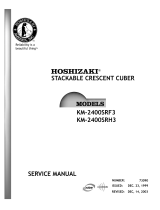 Hoshizaki American, Inc. KM-2400SRH3 User manual
Hoshizaki American, Inc. KM-2400SRH3 User manual
-
Hoshizaki MWH User manual
Other documents
-
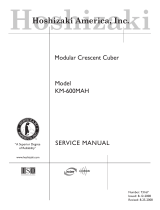 Hoshizaki American, Inc. KM-600MAH User manual
Hoshizaki American, Inc. KM-600MAH User manual
-
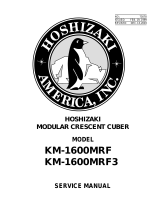 Hoshizaki American, Inc. KM-1600MRF3 User manual
Hoshizaki American, Inc. KM-1600MRF3 User manual
-
Manitowoc Ice Q-0130 User manual
-
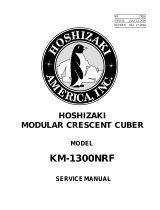 Hoshizaki American, Inc. KM-1300NRF User manual
Hoshizaki American, Inc. KM-1300NRF User manual
-
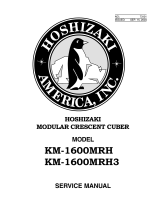 Hoshizaki American, Inc. KM-1600MRH3 User manual
Hoshizaki American, Inc. KM-1600MRH3 User manual
-
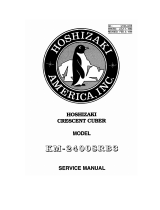 Hoshizaki American, Inc. KM-2400SRB3 User manual
Hoshizaki American, Inc. KM-2400SRB3 User manual
-
 Kolpak Walk-ins PCL149MOP User manual
Kolpak Walk-ins PCL149MOP User manual
-
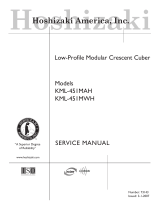 Hoshizaki American, Inc. KML-451MAH User manual
Hoshizaki American, Inc. KML-451MAH User manual
-
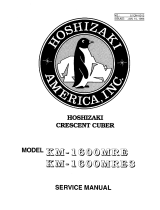 Hoshizaki American, Inc. KM-1600MRE3 User manual
Hoshizaki American, Inc. KM-1600MRE3 User manual
-
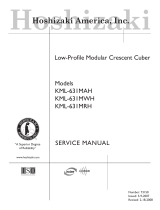 Hoshizaki American, Inc. KML-631MWH User manual
Hoshizaki American, Inc. KML-631MWH User manual





































































